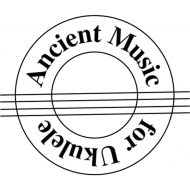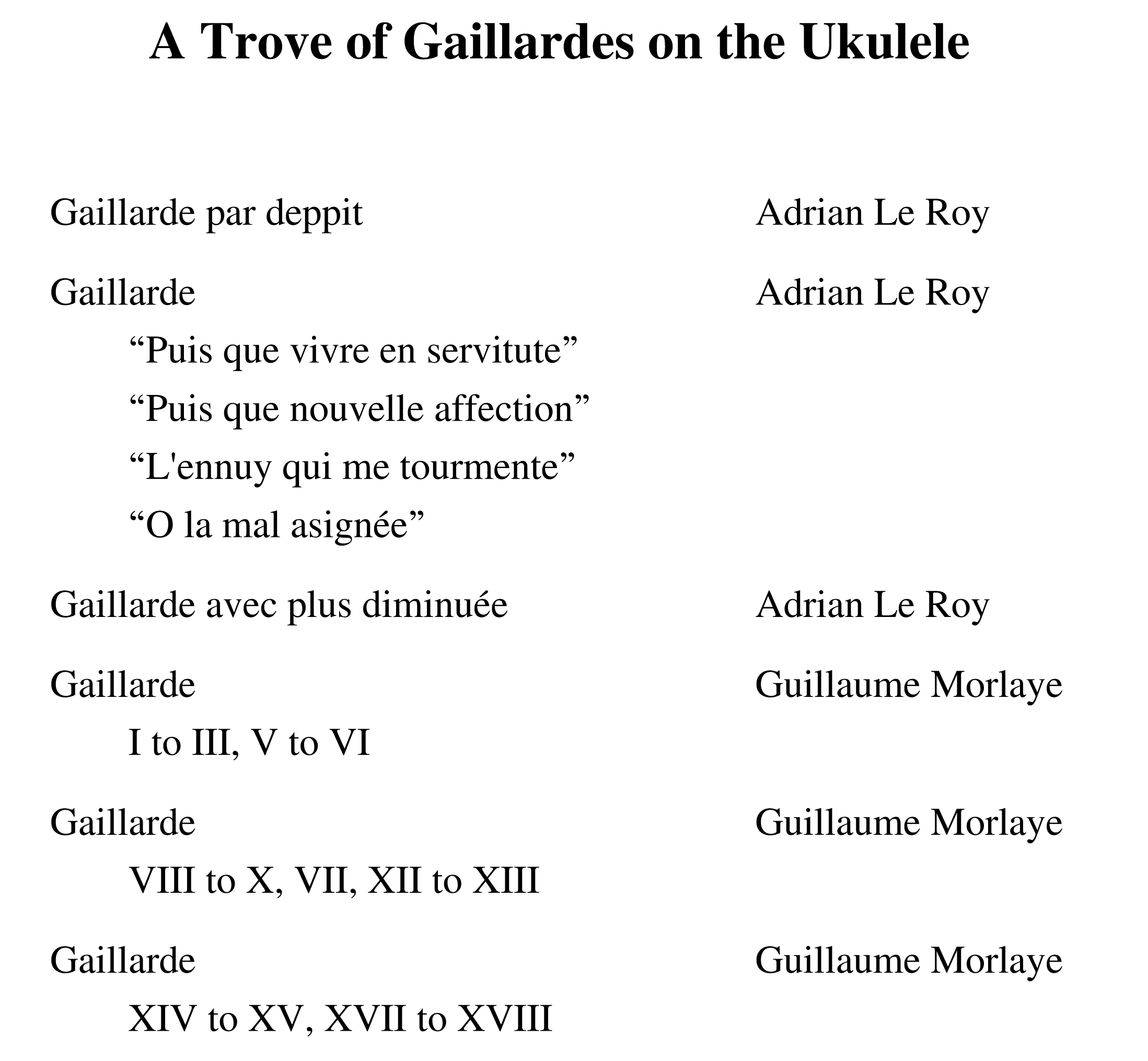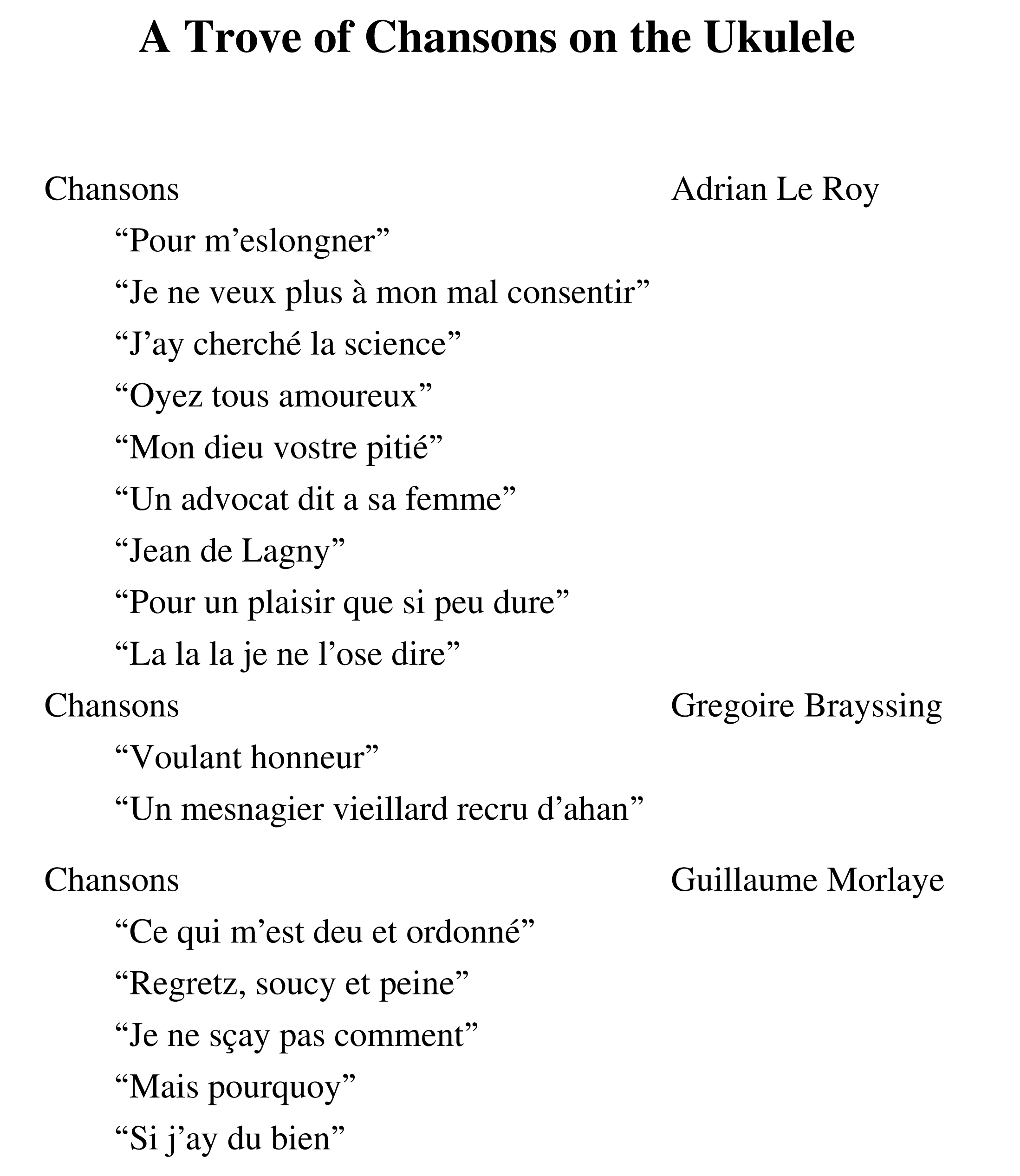Music for guitar, vihuela and lute was written using tabulature in the Renaissance and Baroque eras (modern spelling tablature or TAB for short), however, it was not consistent. The conventions used by the French, Italians or Spanish differed, composers used hybrid methods and some ventured into alternate tunings (oh my!).
The illustrations used below are pieces for guitar or vihuela as both instruments were popular in the Renaissance.
French Tabulature
French tabulature was used in the publications from Le Roy and Morlaye from Paris in the 1550’s as shown …
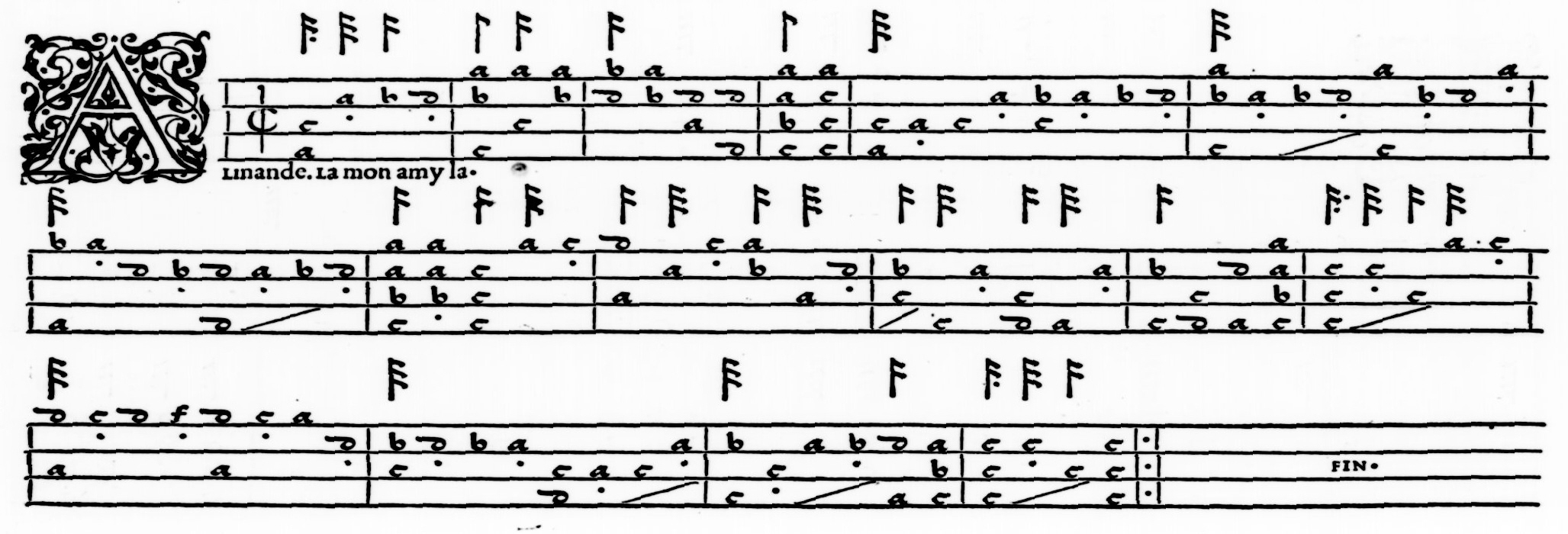
To read this, the top line of the score represents the highest sounding or A string on the Renaissance guitar (or ukulele) and the bottom line corresponds to the lowest sounding or G string. Letters are used to indicate which fret to use to play the note with “a” representing an open string, “b” is the first fret, “c” is the second fret, etc. This is somewhat confusing at first but it soon becomes second nature when reading the score. The duration of the note is indicated by the stem above the score with one “tail” representing a quarter note (in “cut” time or 2/4 time), two “tails” an eighth note, etc. (and a dot indicating to hold the note for 50% longer).
This matches what we use for tabulation in modern scores, except that we use numbers instead of letters for the frets, as shown (this is the full modern score of the music illustrated above) …
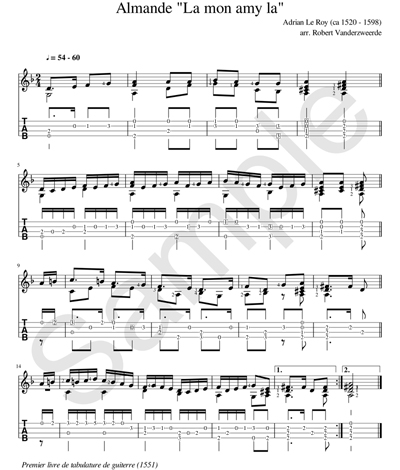
Here’s another example of this style of tabulature (it’s the music for “Greensleeves”) …
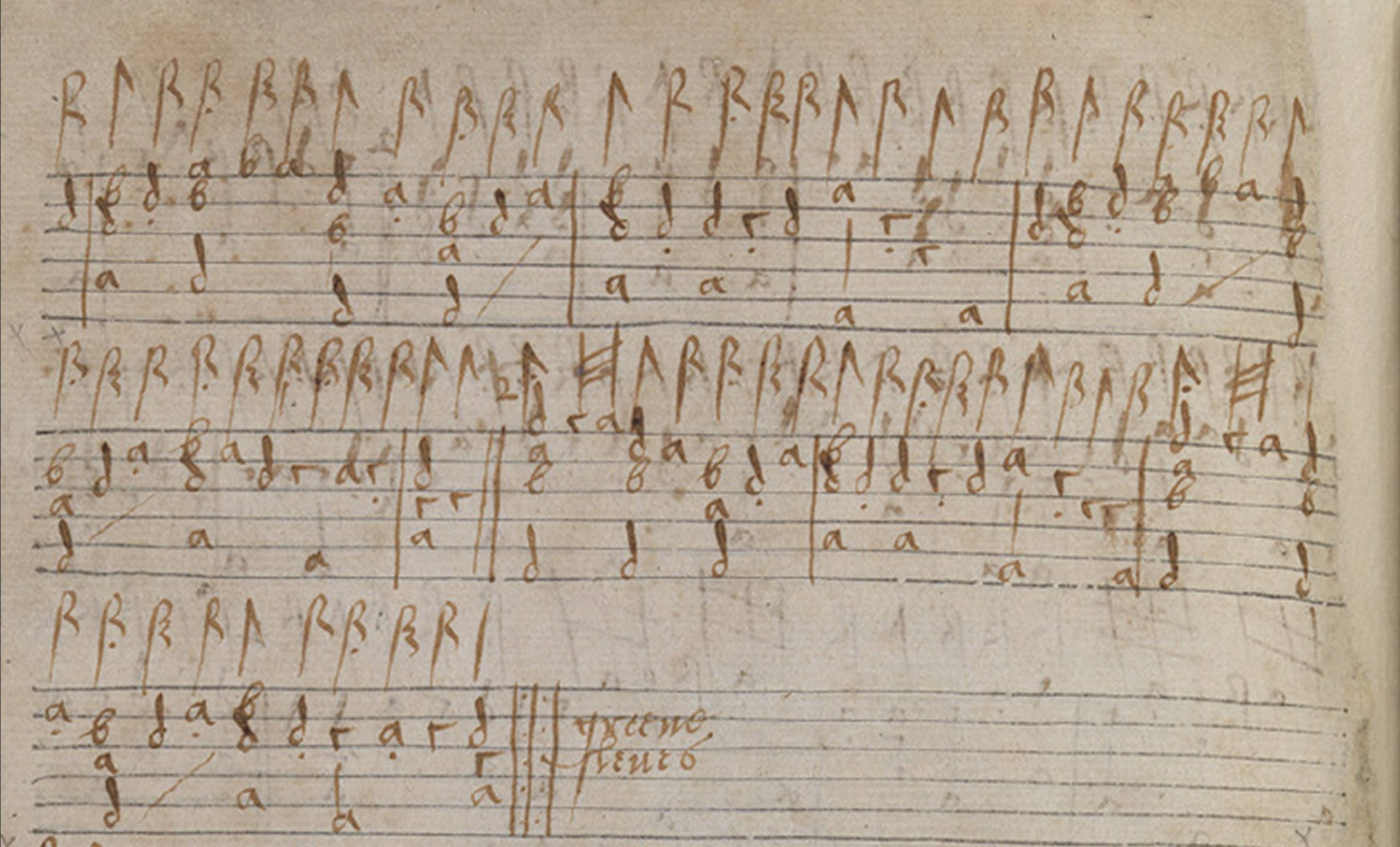
Italian Tabulature
Italian tabulature was used by Spanish composers Mudarra, Fuenllana and others in the 16th century in music for the vihuela and Renaissance guitar as shown …

It almost looks like modern tabulation in that is uses numbers to represent the frets (zero for an open string, “1” for the first fret, “2” for the second fret, etc.) The only difference from modern tabulation is that it is “upside down” in that the bottom line on the score represents the highest sounding or A string on the Renaissance guitar (or ukulele) and the top line corresponds to the lowest sounding or G string. For modern players, this takes some getting used to, especially if you switch between different scores. The duration of the notes are above the staff and look like our modern notes (whole notes, half notes, quarter notes), including dotted notes.
Here the first line of the same score using modern notation and tabulation …

Hybrids
While the Italian method was used for most Spanish composers at the time, Milan’s publication “El Maestro” in 1536 reversed the order of the lines (like French tabulature) but continued to use numbers for the frets and note durations (like Italian tabulature) as shown in this illustration of music for vihuela …

Alternate Tuning
There are alternate tunings available for the strings (e.g. tuning the lowest or fourth string down a whole tone from G to F on a Renaissance guitar or ukulele). This is usually noted at the beginning of the piece. In the original music, you may see a note such as “a chorde auallée” which means to use alternate tuning. In modern music, it is either written out in detail or written in short form, such as ④ = F at the start of the piece.
Modern Tablature (TAB) and Notation
Modern tablature is a mix of French tabulature (i.e. ordering of the lines on the staff and using stems above or below the staff to represent the note length) and Italian tabulature (i.e. using numbers to represent the frets).
Often, when a piece has both notation and tablature or TAB, the note durations are omitted on the TAB lines. It is up to the player to read both lines simultaneously (i.e. the TAB lines for the string/frets and the notes lines for the duration). In the arrangements that I create, I include the note durations on the TAB lines to make it easier to read/play.
Of course, modern musical scores have key signatures for the notes but notice that the tablature or TAB lines in the same scores above do not show a key signature as it’s not needed when reading TAB. This makes it challenging to translate the original Renaissance tabulature back into modern musical notation as the key is not shown. In fact, the original music often moves modally between different keys or ends on a Picardy third (i.e. ending on a major chord while the rest of the piece is in a minor key, as you may notice in the “Almande” illustrated above). The keys in the modern musical scores above are chosen for the ukulele, not for the modern classical guitar which is used in most of the transcriptions that are available.
Fingerings (i.e. which finger to use to play a note on the fretboard) are never shown in the tablature line in either original or modern scores. It is often up to you, the player, to work that out. Recommended fingerings are sometimes indicated but only shown on the notation lines in modern scores as a small number beside the note.
Finally, when reading the notes, there are sometimes instructions on which position to use (e.g. VII for seventh position or to play a barre chord on the seventh fret) or alternate strings (e.g. ② to indicate that the note should be played using the second string), neither of which is needed when reading tablature or TAB.
I invite you to experiment reading the various styles of tabulature or tablature/TAB. Enjoy!
